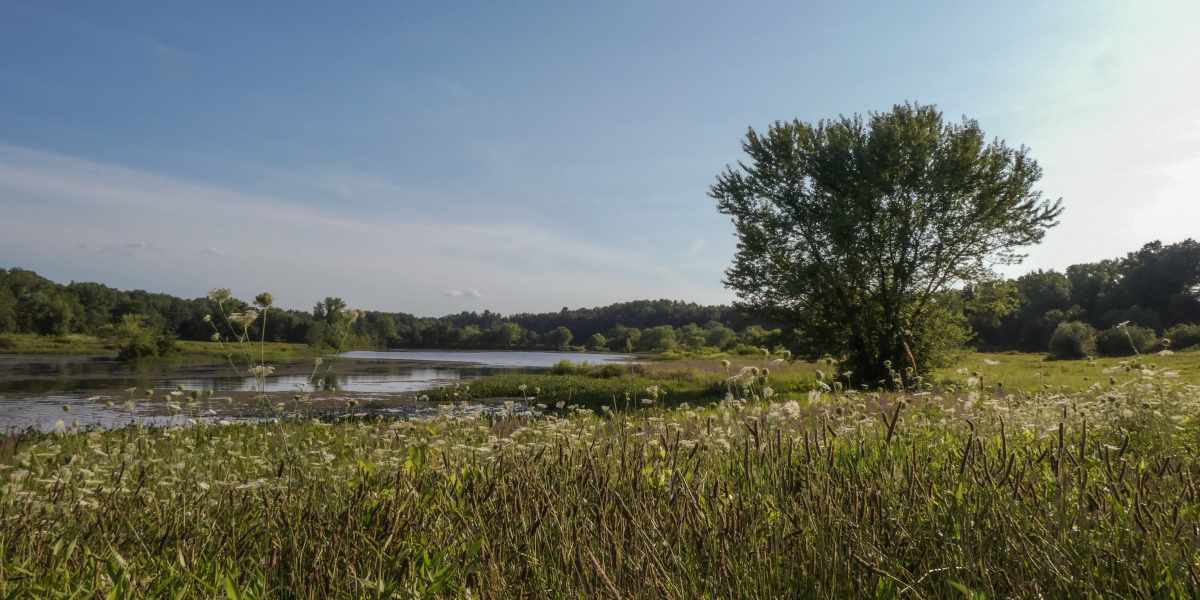
July 16, 2020
Guest post by Patrick Lloyd-Smith, Peter Boxall and Ken Belcher
Canada is losing its wetlands. In the Canadian prairies, 40% to 71% of wetlands have been lost since European settlement and this has been largely due to agricultural expansion. Existing policies and programs in Canada have not been successful in stopping or reversing this trend.
Part of the reason conserving wetland is challenging is that while society reaps the majority of benefits from wetlands in terms of ecosystem services such as carbon sequestration, flood control, and recreation opportunities, private landowners are typically left to bear the costs of ‘supplying’ these wetland services. This situation is quite different for most agricultural products (e.g. canola or wheat) where markets bring consumers’ demands and producers’ outputs into alignment. No such markets exist for most benefits that wetlands provide to society, which raises challenges for economic measurement (e.g., how much are these benefits worth?) and wetland management (which wetlands should we conserve?). With this misalignment in benefits (wetlands are great for society) versus costs (agricultural producers pay the costs), it is perhaps not surprising that wetlands have continued to be drained and degraded.
The effective and efficient design of policies to align the interests of the landowner and society requires understanding the relevant benefits and costs of wetland conservation. But this is not an easy task. Using economic principles to justify wetland protection has resulted in an “economics of wetland conservation” discussion. This has included simple back of the envelope calculations involving transfers of economic values from other studies that may be unrelated to the specific wetland(s) at hand. This approach by conservationists and policy makers has resulted from a lack of primary research into the economics of wetland conservation.
Our recent Smart Prosperity working paper reviews the state of wetland conservation economics knowledge in the Canadian prairies. We first review the economic methods applied to uncover the costs wetlands impose on landowners (i.e. wetland supply curves) and synthesize the empirical evidence. We find that wetland supply curves – ordering the costs of specific wetlands from lowest to highest – have a distinctively Canadian ‘hockey stick’ shape. This cost variation is driven by three differences (1) opportunity costs such as farm production systems (rotations, crop choice, etc.), land productivity (soil class, etc.), (2) nuisance costs such as location of wetland within field, and (3) drainage costs such as distance to waterway and role in local hydrology. Furthermore, these wetland costs are dynamic and are likely to change quickly over time due to changing crop production practices, crop prices, drainage costs, and the evolving role of technology. These factors make past cost estimates less useful for current policy development.
We then outline a wetland ecosystem service conceptual framework to measure benefits (i.e. wetland demand curves instead of wetland supply curves) and discuss the main approaches used to place an economic value on these ecosystem services. We find that we know little about the economic benefits of wetlands in Canada. This information gap is surprising given the rhetoric that occurs in many discussions around wetland conservation, namely that wetlands are incredibly valuable hence deserve protection and conservation.
There is a general misunderstanding of what ecosystem services are, and how they differ from ecological functions. The distinction is not just semantics. Ultimately, it is ecosystem services that affect people’s well-being, and only by understanding their provision on the landscape can we begin to understand the economic benefits of wetlands. In practice, ecosystem services are rarely quantified in meaningful terms that provide a basis for economic valuation. The most common approach to wetland valuation in Canada takes a previously estimated wetland benefit study and transfers the dollar per hectare metric to a new context. These transfers ignore the large degree of variation in ecosystem service provision, valuation, and costs of conversion. Not all wetlands are the same, and thus neither are their functions, services and values. We believe that with current information available it would be difficult to provide accurate site-specific value information that is necessary for effective policy.
Whether the economic benefits of retaining and conserving wetlands outweigh the costs of maintaining them in their original state is likely site specific as there is no average wetland. Thus, a better understanding of the costs and benefits of wetland conservation can help inform the design of policies and programs to improve wetland conservation outcomes across the Canadian landscape.
This blog is based on a recent Smart Prosperity Clean Economy Working Paper titled “From rhetoric to measurement: The economics of wetland conservation in the Canadian prairies” by Patrick Lloyd-Smith, Peter Boxall and Ken Belcher.
The Clean Economy Working Paper Series disseminates findings of ongoing environmental and clean economy work conducted by researchers from a range of disciplines including economics, public policy, political science, and law.